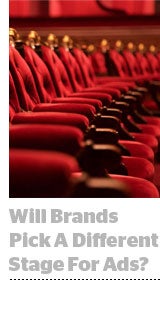As advertisers yank spend from YouTube and Google Display Network due to brand safety concerns, premium publishers see an opportunity.
These pubs have long complained that audience-based buying devalues the context they provide – context they claim ensures brand safety.
“Marketers are recognizing in a blunt force way the difference between a platform and publisher,” said Lindsay Nelson, CMO at Vox Media. “There will be a limitation to what a Google algorithm can control, versus a publisher like us being able to say that we own our own IP, the ad experience and the premium context.”
But publishers can’t compete with platforms’ scale. Even before YouTube’s brand safety issue emerged, these publishers worked to scale up to attract brands used to reaching millions efficiently on a platform. Those solutions include Vox Media’s Concert, Time Inc.’s ad tech-led buying options and Digital Content Next’s TrustX.
Even though Vox Media is large on its own, it partnered with NBCUniversal last April and then Condé Nast in March to give brands a place to run mobile video and display ads across Concert.
Adding Condé Nast helped Vox Media’s Concert hit 200 million uniques, and that’s when it finally clicked with the market, Nelson said.
“The conversation has been evolved to a more scale play, and the performance we can deliver,” said Ryan Pauley, general manager of Concert for Vox Media. “We have conversations that are closer to what they are having with a YouTube or Facebook versus an individual publisher.
Vox Media is not the only one that’s tried to match the scale of a large platform with a message that’s more about content. Time Inc. has done so by diving into ad tech itself, via acquisitions like Viant and Adelphic that make it easier to buy Time’s audience.
“We offer adjacency to premium, brand-safe video programming, both on our sites and across a vetted syndication network,” said Brad Elders, EVP and CRO at Time Inc.
But publishers wonder if buyers, despite their public concerns about brand safety, really care more about cheap reach than quality context.
At The New York Times, it’s more the exception than the rule that advertisers care about its high-quality news context.
“We’ve gotten the odd brief where they say, ‘We really want to work with brands like the Times or The Wall Street Journal because we want to support this coverage,” said Sebastian Tomich, SVP of advertising and innovation for the Times, during a recent AdExchanger podcast.
“But at the end of the day, the day-to-day media buyer isn’t placing a premium on that. They’re still focusing on impressions, clicks, lowest CPM and scale, scale, scale,” Tomich added.
Digital Content Next CEO Jason Kint characterizes media buyers the same way.
“Media buyers long ago turned digital into a relentless pursuit to buy the cheapest audience possible without having to pay for quality media,” Kint said.
The trade group for premium publishers launched TrustX in February – which includes Vox Media inventory – that combines the scale programmatic buyers love with high-quality publisher placements.
But although Kint has heard some agencies are considering moving to whitelists, which would benefit Digital Content Next’s member publishers, he’s not holding his breath: “I’ll believe it when I see it and I’ll stand and applaud when it happens.”
Although publisher solutions marrying scale with premium context became available a few years ago, ho-hum adoption sometimes follows splashy rollouts.
Instead of paying to access curated publisher inventory, some brands prefer to build their own blocklists, buy on the open exchange and assume their tech partners will maintain minimum brand safety standards.
Horizon Media SVP of programmatic Adam Heimlich indicated the agency is thinking more about better filtering, and not about moving budgets to more high-end contexts.
“The critical distinction is not ‘premium’ – it’s monitored,” he said.
Publishers – who have a horse in the race – vehemently disagree with this approach.
“Direct marketers don’t care so much about context, environment or brand safety,” Kint said. “If things don’t change at this point, then brand stewards are willfully driving their brands into the toilet.”
Vox Media’s Nelson echoed those concerns, but said that the spotlight on brand safety changed that mindset.
“Marketers have forgotten about what was once a central tenet of how they invested their media dollars, which was premium, contextual alignment,” she said.
But not all of them.
“I have not stopped taking calls from CMOs in the past two weeks,” Nelson said of Vox Media’s Concert. “The appetite is enormous.”













